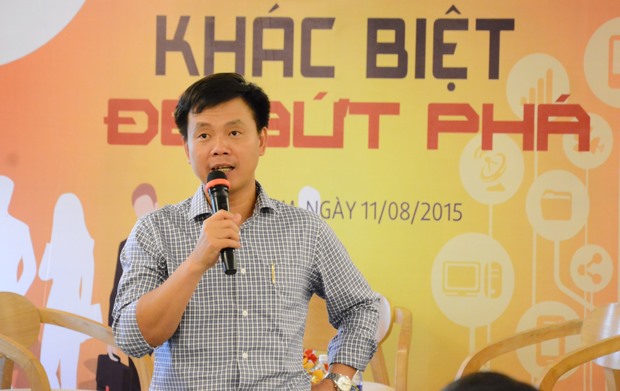 Opinion
Opinion

Phạm Minh Tuấn, the CEO of FPT Telecom, speaks to the newspaper Kinh tế & Đô thị (Economic and Urban Affairs) about the group’s determination to solve the serious problem of traffic congestion in Hà Nội through its IT application.
 |
| Phạm Minh Tuấn, the CEO of FPT Telecom. — Photo chungta.vn |
Phạm Minh Tuấn, the CEO of FPT Telecom, speaks to the newspaper Kinh tế & Đô thị (Economic and Urban Affairs) about the group’s determination to solve the serious problem of traffic congestion in Hà Nội through its IT application.
Hà Nội is has the most dense urban transport in Việt Nam. To solve this problem, we need to understand the city’s transport characteristics. In your opinion, what are they?
Motorcycles run on the same lane with cars. This is the most salient problem. I don’t think we can initiate our own solution. We have to base ourselves on technology and then adjust it to our own circumstances. In addition, we have to conduct research on the behaviour of Vietnamese motorcycles drivers. After these steps, we’ll develop proposals for Hà Nội transport.
As we all know, Hà Nội and Hồ Chí Minh are the two biggest cities of the country with millions of vehicles. Quite a few investors have come to the two cities, but after studying the traffic situation, they all said “we need to conduct a special model for Việt Nam” and “we need much time and money for the project”. After hearing their comments, we decided that we, Vietnamese will do it. We’re confident that we can.
Would you elaborate on the idea of developing a smart transport system?
FPT’s scheme will have three main concepts. First, it must be able to solve the problem of traffic congestion. Second, it must reduce traffic accidents. And third, when traffic congestion is reported, the system will immediately send a report to the rapid response management agency so that it can resolve the problem immediately.
Let me give you a specific example. After receiving a report on traffic congestion at a certain locality, the smart transport system will immediately give instructions to the nearest rapid response management unit on how to solve it. If there is a serious accident it will immediately dispatch an ambulance to the site. In the meantime, satellite images of the accident will be recorded. With such rapid response, I’m confident that the road will be clear as soon as possible. At present, a serious accident often takes about 30-45 minutes to clear and resume traffic.
To introduce such a novel transport system, does FPT have to learn from other countries?
No doubt about that. We have to draw lessons learned from many cities in Europe, Australia or China and then try to select the most suitable to our own situation.
Once the co-operation agreement between the Hà Nội People’s Committee and the FPT is signed, we’ll establish a working team involving representatives from several agencies, including the Hà Nội Department of Transport, the Hà Nội Police Department, the Department of Information and Communication, the Department of Health and others. We’ll then send members of the working team on study tours abroad and they will be able to come up with the most suitable model for Việt Nam.
Does the FPT need further support from the Hà Nội People’s Committee and relevant agencies?
The city’s input data about its transport infrastructure is very valuable for us. Here I just want to say that we’re not building a new house or introducing a new solution. We’ll try to build on what is already available to make it work better. That’s why we need active support from the Department of Information and Communication, the Department of Transport, the Hà Nôi’s Police Department and others.
The FPT promises that the work on the new system will start and be completed between 2017 and 2020. The project will be implemented in six-month stages. In other words, some project portions will be totally new, some will be repaired and some upgraded. Hopefully, by 2020, all FPT applications will work perfectly as they are designed to perform.
As an investor, do you think Hà Nội authorities have honoured their commitment to work side by side with their investors?
No doubt about that. Mayor Nguyễn Đức Chung is an active participant in all the meetings about IT applications for improving the city’s transport.
As we all know, in any project, particularly the application of information technology (IT), active involvement of the city mayor is very important. It’s a commitment from Hà Nội on administrative reform, change in the working procedures and the application of modern IT. Of course, at the end technology is only a supporting tool for government agencies to perform their assigned duties better.
I’m confident that Hà Nội will have better traffic flow when this project is completed._VNS




